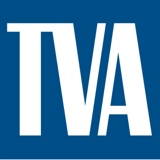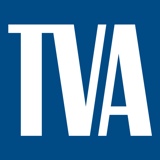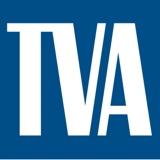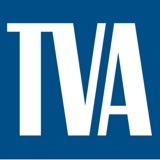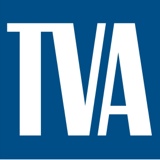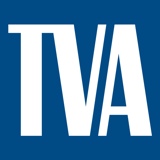Cover
-
Document No.
-
Audit Title
-
Plant or Faclity:
-
Unit(s) [if applicable]
- 1
- 2
- 3
- 4
- 5
-
Conducted on:
-
Prepared by:
-
Team Members:
CSE General Requirements
General Requirements for Entry into Permit Spaces:
-
Has the workplace been formally evaluated to determine if any Confined Spaces exist?
-
Comment:
-
Are all Confined Spaces listed in the Site Confined Space Inventory & Evaluation Form?
-
Comment:
-
For each space listed on the Inventory, are hazards identified and evaluated and has a Confined Space Evaluation Report verified and then eliminated or controlled?
-
Comment:
-
Prior to entry, are the hazards listed on the Evaluation Report verified and then eliminated or controlled?
-
Comment:
-
Have exposed employees been informed of the existence and dangers posed by Confined Spaces on site?
-
Comment:
-
Are Confined Spaces, which can be readily entered, identified by DANGER signs, or by any other equally effective means? (Confined Spaces such as piping systems or man-ways with multiple bolts may not necessarily require such signs).
-
Comment:
-
If employees will not enter Confined Spaces, have effective measures been taken to prevent entry?
-
Comment:
-
Are the means, procedures, and practices necessary for safe permit space entry operations developed and implemented?
-
Comment:
Permit Reviews
Review of Completed Entry Permits:
-
Was a rescue plan specified and described on the permit?
-
Comment:
-
Where means for summoning rescue identified and functionally tested?
-
Comment:
-
Was Rescue IN USE? (Non-entry retrieval set up with a trained attendant or entry rescue equipment staged at the entry portal?
-
Comment:
-
Where enough rescuers available for the entry operation?
-
Comment:
-
Did the Rescue Team pre-plan the Permit Space?
-
Comment:
-
Where acceptable entry conditions specified?
-
Comment:
-
Where Engineering and work practice controls specified?
-
Comment:
-
Was PPE (Personal Protective Equipment) properly specified for the hazards present?
-
Comment:
-
If Respiratory Protection was specified was ventilation in use to minimize the atmospheric hazard(s)?
-
Comment:
-
Was the atmospheric monitoring data readily available for review by employees (evidence of posting)?
-
Comment:
-
If an initial entry is required to obtain the data above, is the entry made under the written permit space program?
-
Comment:
-
Has the Entry Supervisor and Atmospheric Evaluator properly evaluated ALL of the hazards of the space? Are "eliminated" hazards truly isolated?
-
Comment:
-
Other than atmospheric, are hazards listed on the Evaluation Report that are not eliminated?
-
Comment:
-
Once the entrance is removed, is the opening protected by a railing, temporary cover, or barrier that will prevent an accidental fall through the opening and that will protect each employee working in the space from foreign objects entering the space?
-
Comment:
-
Prior to an employee entering the space, is the internal atmosphere tested with a calibrated direct reading instrument?
-
Comment:
-
Is monitoring done in the following order: Oxygen content, Flammable Gases and Vapors, and then potential toxic air contaminants?
-
Comment:
-
When the employee enters the space, is the atmosphere inside of the space free from all contaminants?
-
Comment:
-
Is natural or continuous forced air ventilation alone sufficient to maintain the space safe for entry?
-
Comment:
-
Is the atmosphere inside of the space periodically tested, as necessary, to ensure that natural or continuous forced air ventilation is preventing the accumulation of a hazardous atmosphere?
-
Comment:
IF Continuous Forced Air Ventilation Is Used:
-
Has the continuous forced air ventilation eliminated any hazardous atmosphere before an employee enters the space?
-
Comment:
-
Is the continuous forced air ventilation so directed as to ventilate the immediate areas where an employee is or will be present within the space?
-
Comment:
-
Is the forced air ventilation continued until all employees have left the space?
-
Comment:
-
Is the air supply for the forced air ventilation from a clean source hat does not increase the hazards in the space?
-
Comment:
IF a Hazardous Atmosphere is Detected During The Entry:
-
Do all employees exit the space immediately?
-
Comment:
-
Is the space evaluated to determine how the hazardous atmosphere developed?
-
Comment:
-
Are measures implemented to protect employees from the hazardous atmosphere before any subsequent entry takes place?
-
Comment:
-
Is the space verified safe for entry, using a written certification form?
-
Comment:
-
Is the Confined Space Evaluation Report completed prior to entry?
-
Comment:
-
Does the Confined Space Evaluation Report contain the date, the location of the space, and the signature of the person providing the verification?
-
Comment:
-
Is the Confined Space Evaluation Report made available to each employee entering the space?
-
Comment:
Non-Permit Entry
NON-PERMIT ENTRY
-
If there are changes in the use or configuration of a non-permit required confined space that might increase the hazards to entrants, are the spaces re-evaluated and, if necessary, reclassified as permit required confined space?
-
Comment:
-
Do any of the non-permit confined spaces pose any actual or potential atmospheric or physical hazards?
-
Comment:
-
If it is necessary to enter the space to eliminate hazards, is the entry initially made under the permit required program?
-
Comment:
-
Is written certification via the Hazard Evaluation Report available listing the basis for determining that ALL hazards in a permit space have been eliminated if it was down-graded to a non-permit confined space?
-
Comment:
-
Is the Hazard Evaluation Report posted at the entry portal for a Non-Permit Space and available to each employee entering the space?
-
Comment:
-
If hazards arise in a space that has been re-classified as a non-permit required Confined Space, do all employees exit the space?
-
Comment:
-
If a non-permit required space has to be evacuated, is the space re-evaluated to determine whether it must be reclassified as a Permit-Required Confined Space?
-
Comment:
Contracting Partners
Contractor Entry
-
Are measures in place that will prevent unauthorized entry into Confined Space by supplier/contractor personnel?
-
Comment:
-
Have suppliers/contractors been informed that the workplace contains Confined Spaces, and that confined space entry is allowed ONLY through compliance with the site's written Confined Space Entry Program or equivalent?
-
Comment:
-
Does the contractor obtain any available information regarding Confined Space Hazards and entry operations from the job sponsor or site?
-
Comment:
-
Has the contractor been apprised of the elements, including the hazards identified and historical experiences with the space that makes the space a Permit Space?
-
Comment:
-
Has the contractor been apprised of any precautions or procedures that have been implemented for the protection of employees in or near confined spaces where the contractor personnel will be working?
-
Comment:
-
Has the contractor demonstrated that the contractor personnel, that will be expected to enter confined spaces, have been properly trained?
-
Comment:
-
Are entry operations coordinated with the contractor, when both site employees and contract personnel will be working in or near confined spaces?
-
Comment:
-
Does the contractor coordinate entry operations with the job sponsor, when both site personnel and contractor personnel will be working in or near a confined space?
-
Comment:
-
If applicable, does the contractor inform and allow the job sponsor to review the Confined Space Entry Program that the contractor will follow (if different) and of any hazards confronted or created in permit spaces, either through a job planning, pre-job briefing, during the entry operations, or during a job debriefing?
-
Comment:
-
Is the contractor debriefed at the conclusion of the entry operation regarding the Confined Space Entry Program that was followed and questioned regarding any hazards confronted or created in permit spaces during entry operations?
-
Comment:
Rescue
Confined Space Reacue
-
Are procedures developed and implemented for summoning rescue and emergency services?
-
Comment:
-
Are procedures developed and implemented for rescuing entrants from permit spaces, and for providing necessary Emergency Services to rescued employees?
-
Comment:
-
Are procedures developed and implemented that prevent unauthorized personnel from attempting rescue?
-
Comment:
-
Is a system developed and implemented for the preparation, issuance, use, and cancellation of entry permits?
-
Comment:
-
Has the outside service been evaluated as to its ability, qualifications, equipment and willingness to provide the needed response?
-
Comment:
-
Is the evaluation documented and on file as part of the site's written Confined Space Entry Program?
-
Comment:
-
Has the outside service visited the plant during the past year, made aware of the types of spaces they may have to enter to perform a rescue, and given the opportunity to practice rescue techniques at the plant?
-
Comment:
Entry Observations
Active Confined Space Entry Observation
-
(Two active confined space entries must be selected and observed for this evaluation.)
-
Is the space clearly identified as a Permit Required Confined Space?
-
Commented:
-
Is a Confined Space Permit posted at the access? (If more than one access, are copies posted at each, and are sufficient means employee to prevent unauthorized entry?)
-
Commented:
-
Is atmospheric monitoring being conducted in the space? If an air monitor is being used, is it being used correctly?
-
Commented:
-
Are the conditions in the permit space verified to be acceptable for the entry, throughout the duration of an authorized entry?
-
Commented:
-
Is the Entry Permit current? Verify using the time constraints identified on the Entry Permit?
-
Commented:
-
Are spaces isolated?
-
Commented:
-
Are atmospheric hazards controlled or eliminated by purging, flushing, or through ventilation?
-
Commented:
-
Are work processes on-going in the space listed on the Entry Permit?
-
Commented:
Are Permit Space Conditions Evaluated as Follows When Entry Operations are Conducted?
-
Test conditions in the permit space to determine if acceptable entry conditions exist before entry is authorized to begin?
-
Commented:
-
Test or monitor the permit space, as necessary, to determine if acceptable entry conditions are being maintained during the course of entry operations?
-
Commented:
-
Has permission been granted to enter the space by an Entry Supervisor? Verify signature.
-
Commented:
-
Are all protective measures being utilized, as identified on the Entry Permit?
-
Commented:
-
Do the protective measures provide adequate protection of entrants?
-
Commented:
-
Is access/egress adequate?
-
Commented:
-
Is the access point unobstructed?
-
Commented:
-
Is lighting adequate?
-
Commented:
-
Is communication adequate?
-
Commented:
-
Is ventilation adequate?
-
Commented:
-
Are all employees in the space appropriately logged in?
-
Commented:
-
Is at least one authorized attendant provided outside the permit space, into which entry is authorized, for the duration of entry operations?
-
Commented:
-
Are good housekeeping practices being observed?
-
Commented:
-
Is the area free from on-going work processes that may create hazards to employees in the space?
-
Commented:
-
Where applicable, is emergency rescue equipment available at entrance?
-
Commented:
-
Where utilized, are life lines attached to a substantial structure?
-
Commented:
-
Where needed, are adequate controls (e.g. barricade, ropes, warning tapes and/or signs) being utilized?
-
Commented:
-
Does the location of emergency equipment correspond to what is entered on the Entry Permit? Physically verify.
-
Commented:
-
Does the location of the nearest phone (if applicable) correspond to what is entered on the Entry Permit?
-
Commented:
-
Does the phone or radio being used for Emergency purposes work properly? Physically verify.
-
Commented:
-
Have Entrants read the (or had explained to them) Confined Space Permit and it's requirements?
-
Commented:
-
Do they understand the existing/potential hazards associated with space?
-
Commented:
-
Do they understand the protective measures?
-
Commented:
-
Are protective measures being utilized?
-
Commented:
-
Is the Entry Supervisor accessible? Verify by use of phone or radio to contact.
-
Commented:
-
At other permits or documentation (Hot Work, MSDS, etc.) available at the space, as identified on the Entry Permit?
-
Commented:
-
If the work activity involves welding, are special considerations being followed, such as ventilation and respirator use?
-
Commented:
-
Are the Entrants/Welders using a full body harness and lifeline to enhance rescue?
-
Commented:
-
Is the tripod or other device in place to promote non-entry rescue by the attendant or personnel outside the space?
-
Commented:
-
Is forced ventilation established to prevent the accumulation of toxic materials or possible oxygen deficiency?
-
Commented:
-
Is the monitoring frequency consistent with what is identified on the Entry Permit?
-
Commented:
-
Have the instruments being used for atmospheric testing been calibrated? Use Instrument ID number to verify.
-
Commented:
-
Are all compensatory measures, as identified on the Entry Permit, in use?
-
Commented:
-
Are identified measures appropriate for the hazards encountered within the space?
-
Commented:
-
Is the current Attendant identified on either the Entry Permit or Supplemental Log Sheet?
-
Commented:
-
Has the Attendant been properly trained in their roles and responsibilities?
-
Commented:
-
Has a copy of the Entry Permit been delivered to Operations?
-
Commented:
-
Does a Confined Space Hazard Evaluation Report exist for the space name and location?
-
Commented:
-
Are all persons involved with the entry process properly trained (i.e. Entrants, attendants, authorizing person, HA) Verify by training records.
-
Commented:
-
Do the employees working in the space demonstrate understanding of the Confined Space Entry Program?
-
Commented:
Organizational Effectiveness
Organizational Effectiveness
-
This section can be be used to evaluate how well the Confined Space Entry Program is implemented and supported by management. Focus should be on process issues, not compliance.
-
Does a process ensure that corrective actions are developed and implemented for deficiencies identified during program evaluations or incident investigations are implemented, documented, and communicated to management?
-
Comment:
-
Does a process ensure that Confined Spaces are adequately evaluated and made safe prior to entry?
-
Comment:
-
Does a process ensure that air monitors used in Confined Spaces are calibrated and bump tested as required by the manufacturer?
-
Comment:
-
Does a process ensure that contractors are informed of the:<br>* Hazards associated with Confined Space Entry Job?<br>* Applicable Confined Space Program?<br>* Applicable Emergency procedures for Confined Space Entries?
-
Comment:
-
Does a process ensure that contract employees have been trained for Confined Space Entry?
-
Comment:
-
Does a process exist to ensure the following personnel have been identified and trained in their roles and responsibilities regarding Confined Spaces?<br>* Entrant<br>* Attendant<br>* Authorizing Persons<br>* Authorized Hazard Analyzer<br>* Other affected personnel
-
Comment:
-
Have the appropriate individuals, i.e., those most familiar with the work processes to be performed during the entry, been selected to serve as Entry Supervisor?
-
Comment:
-
Does a process ensure that outside rescue services are kept aware of the types of Confined Spaces, and their hazards, in which they may be called upon to perform a Confined Space Rescue?
-
Comment:
-
Are outside rescue services that have been designated to perform, or provide support for, Confined Space Rescues given the opportunity to train on those spaces at the plant?
-
Comment:
